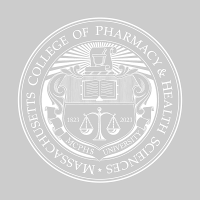Hands-On with PAs: MCPHS Students Inspire the Next Generation
Jennifer PersonsStudents and faculty from the School of Physician Assistant Studies visited schools across Boston to showcase the profession and inspire future healthcare providers.
There are about 5,000 physician assistants in Massachusetts, and students from Massachusetts College of Pharmacy and Health Sciences (MCPHS) are hoping to raise that number. Nearly 50 students and faculty from the School of Physician Assistant (PA) Studies participated in a national PA Education Association initiative, bringing their profession into Boston classrooms this fall.
“This initiative shows students of all ages that there are a lot of opportunities to have a healthcare career, and PA is one of them,” said Ipsita Kadam, ’26, a third-year PA student who helped organize the visits. “The best part is interacting with the students and talking to them about what PAs do.”
MCPHS students visited six classrooms at four different schools. The Health Assisting and Wellness career pathway at The English High School in Boston was one of them.
“We have visited this class a few years in a row, and it’s always really enjoyable,” Kadam said. “These students know they are interested in some kind of healthcare career, so they’re very attentive and interested.
On one side of the room, a group of students sat around the portable ultrasound machine, leaning in toward the small screen. One of them volunteered to be the patient getting an ultrasound of their throat.
“Eww!” they said in unison, watching the hyoid bone—a U-shaped bone in the neck—move up and down as the “patient” stuck their tongue in and out.
At the front of the room, another group practices CPR on a dummy.
“You’ve got a good beat!” Jesse Shaich, MPAS ’27, told Angel Santana, a student who was performing chest compressions in perfect cadence.
“I’m still trying to figure out what I want to do, but this has made me think about being a PA,” Santana said. “I like that this experience is hands-on. I can leave this class and take what I learned with me.”
There were four stations set up in the room for students to practice the skills PAs use every day: reading an ultrasound, performing CPR, listening to the heart and lungs using a stethoscope, and applying a bandage or splint to an arm injury.
The students in this class at The English High School are seniors who chose to study and work toward a career in healthcare. They are OSHA certified and will be eligible to take the Certified Nursing Assistant (CNA) exam before graduating.
“This helps us see how many options there are in healthcare,” said Kwuara Soares, another student. “I’m definitely considering PA as one of them now. It caught my attention because you can practice medicine but still have balance in your life.”
But the school visits aren’t just for high schoolers thinking about their careers. The MCPHS students brought the same four stations and activities to all grade levels, as young as elementary school, to teach them about the PA profession.
“We change the terminology we use and make small changes to the activities so that they make sense for younger students,” Kadam explained. “At one of the elementary schools I visited this year, a little boy shared that his mom was a nurse at a hospital. It was powerful to me that he made that connection, and I hope it sticks with him.”
This year, PA students from MCPHS shared their profession with more than 220 students. Kadam credits the success to the five other PA students who led the effort, the support of the MCPHS faculty, and all the student volunteers.
“Being a PA means being a team player,” she said. “The skills we’ve built to organize, plan, and carry out these visits are skills that we will all carry throughout life and our careers.”
Featured Connections
More University News
MCPHS 2025: A Year in Photos
Our photos from 2025 show connection, community, and celebration.
Graduates Encouraged to ‘Do Good and Be Excellent’ at Winter Commencement
Students from four schools celebrated receiving their degrees on Tuesday.
‘Purpose and Passion’: MCPHS Manchester Students Showcase Research
From pharmacy deserts to Gen Z learning strategies, student researchers explored timely issues shaping the future of healthcare.
This is MCPHS: ‘It’s Really Motivating When You Find the Thing That’s Right for You’
Health Sciences major Emma Borkosky shares her thoughts on getting involved on campus and the formative experiences that shaped her journey into occupational therapy.


